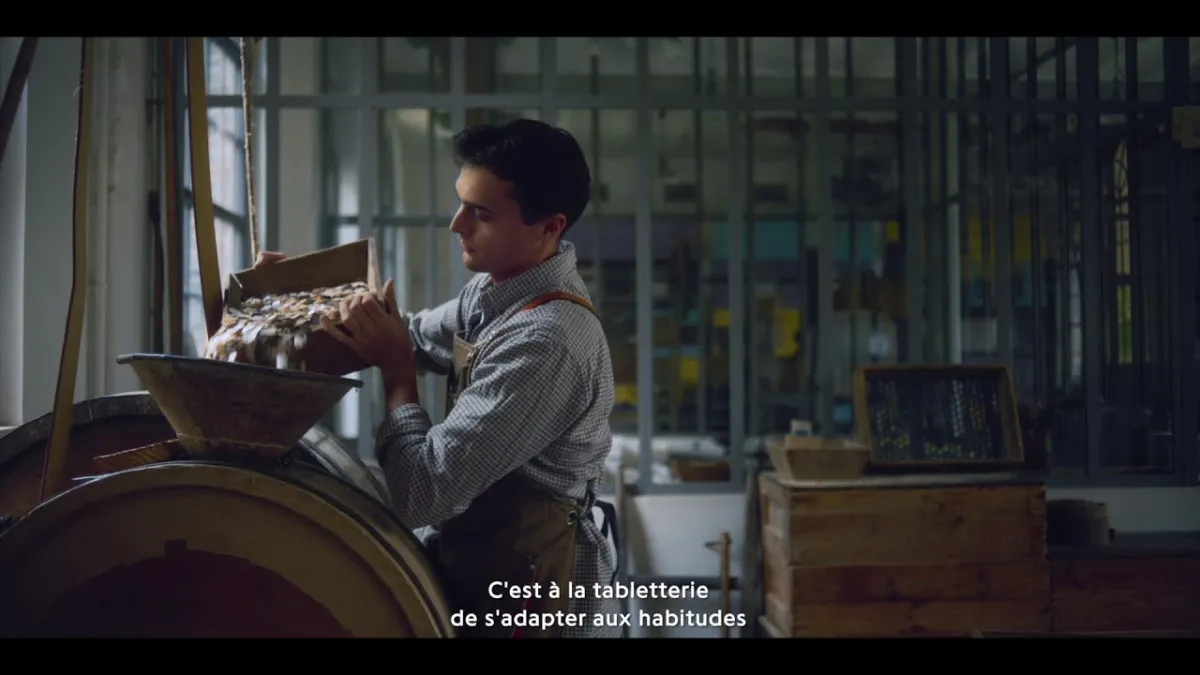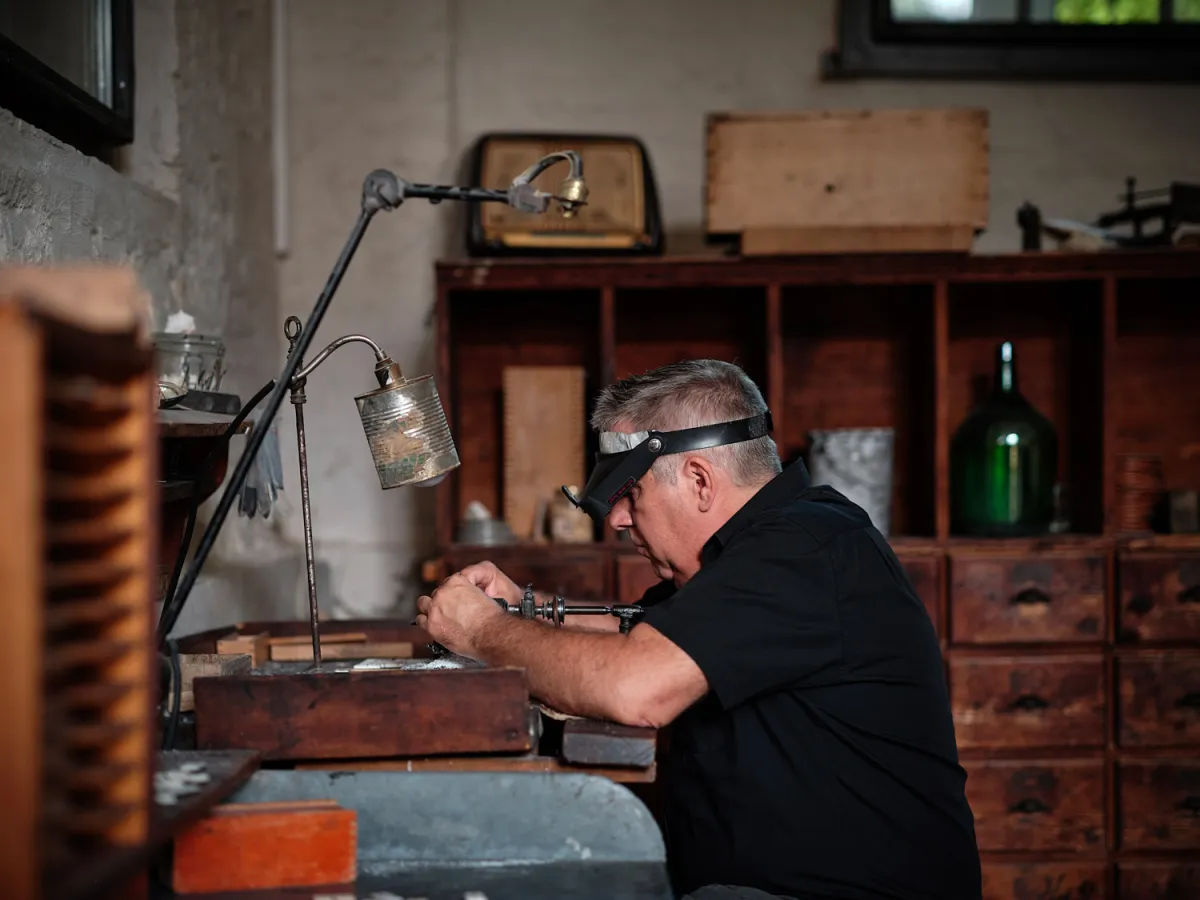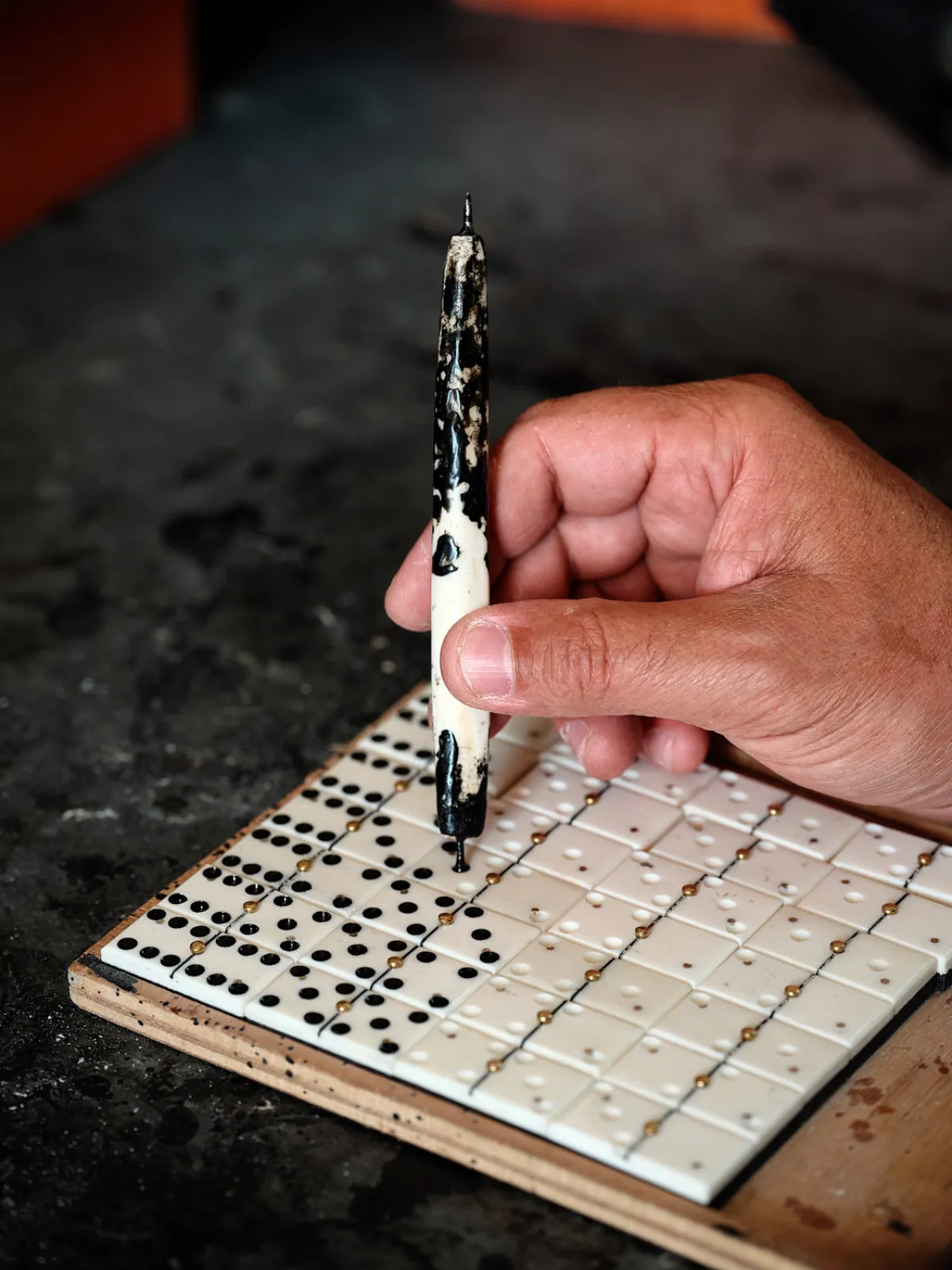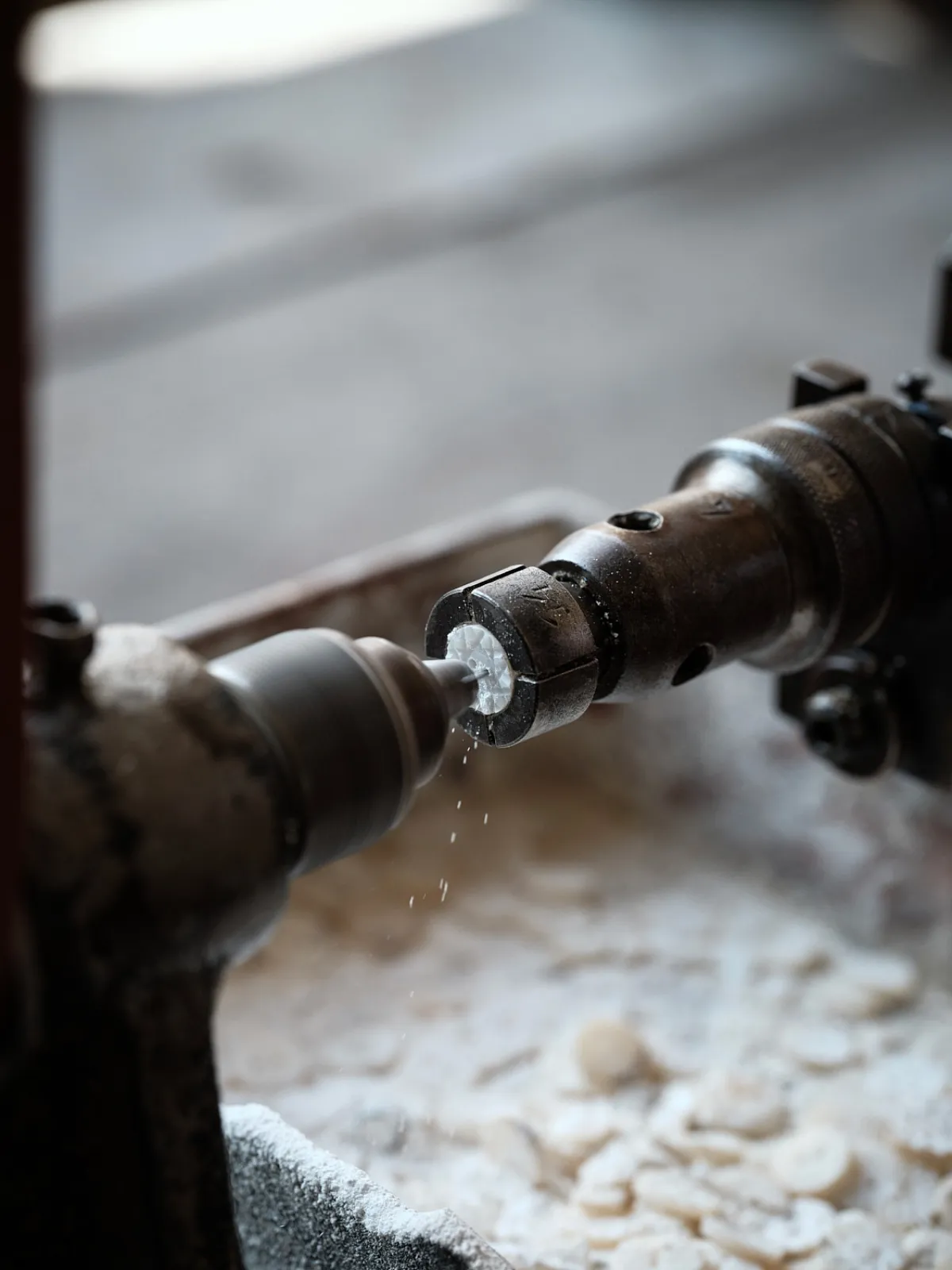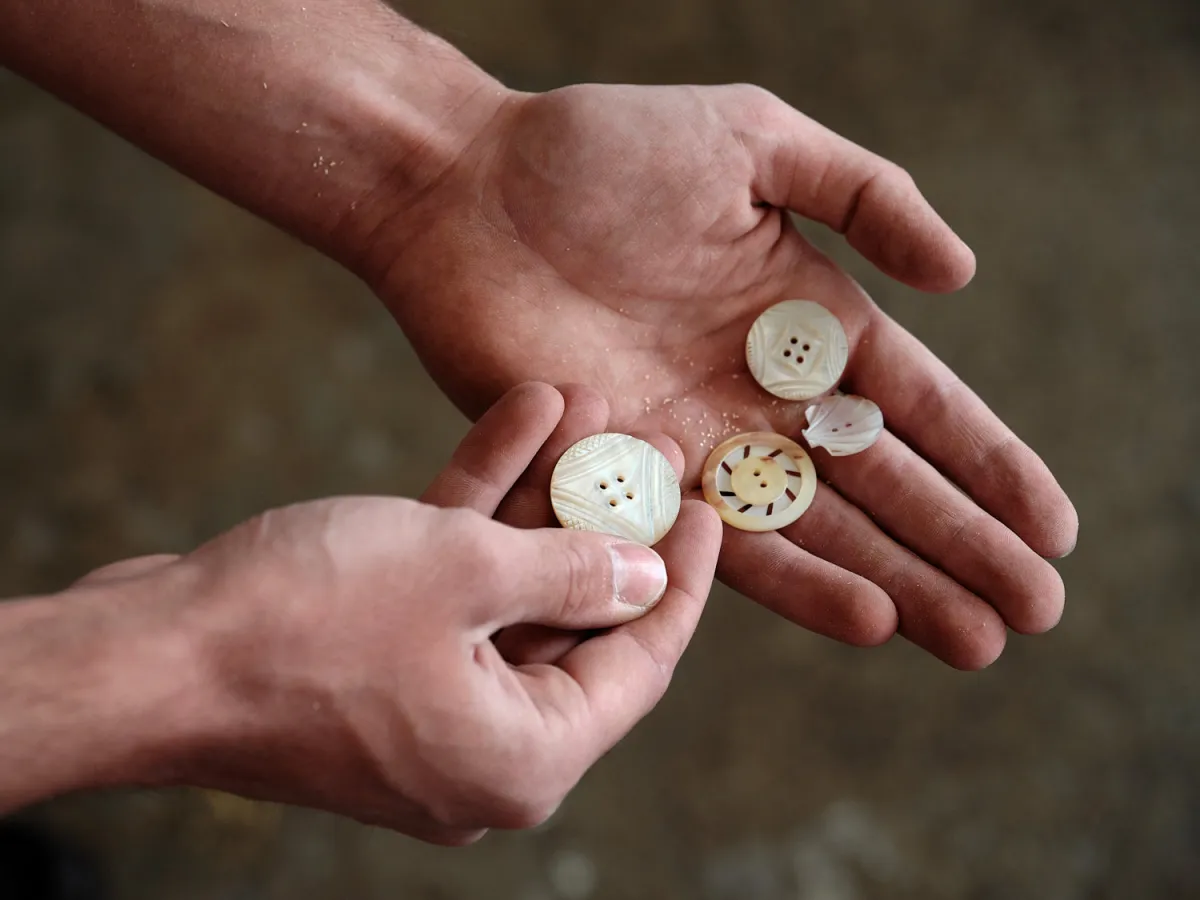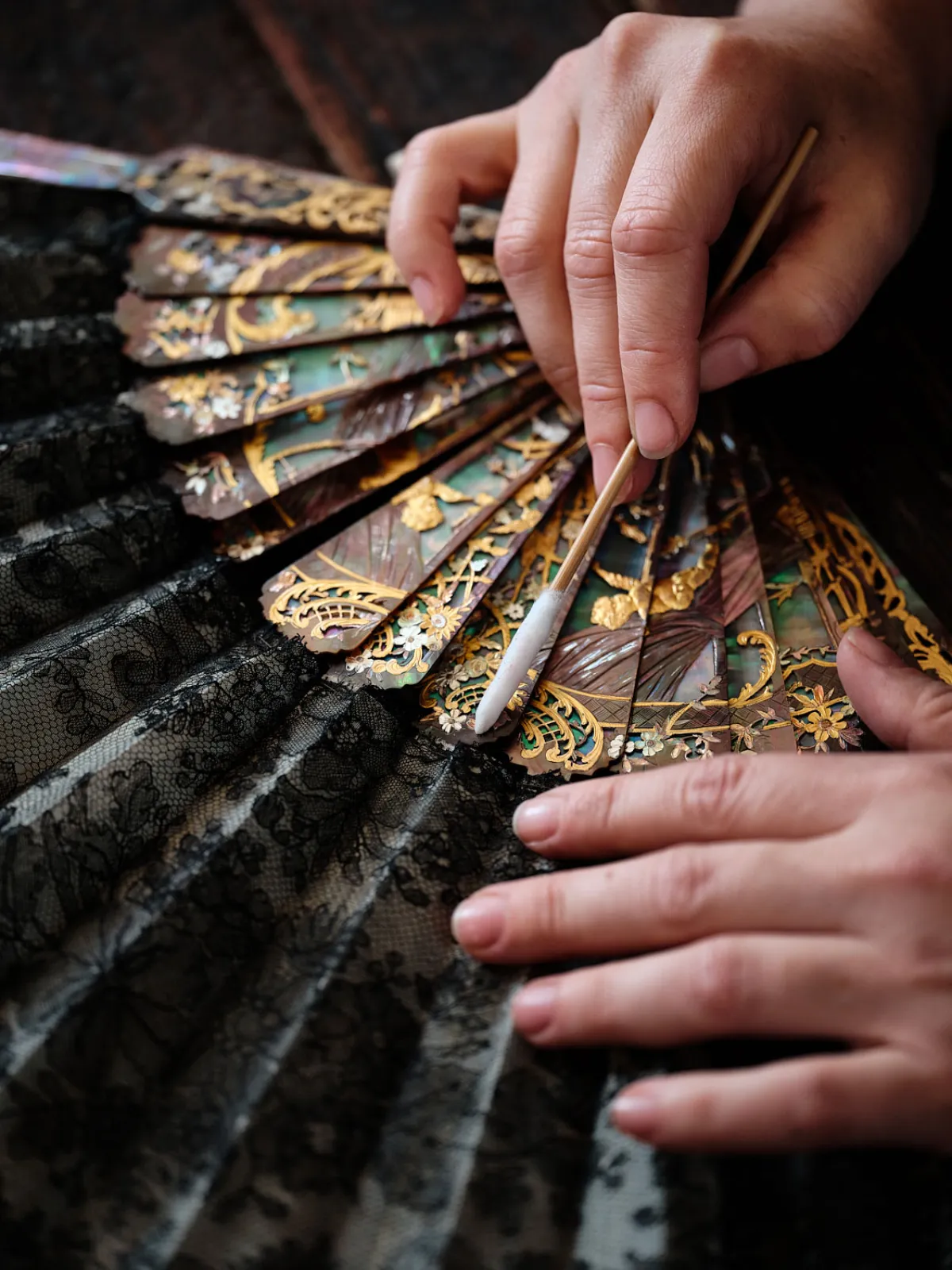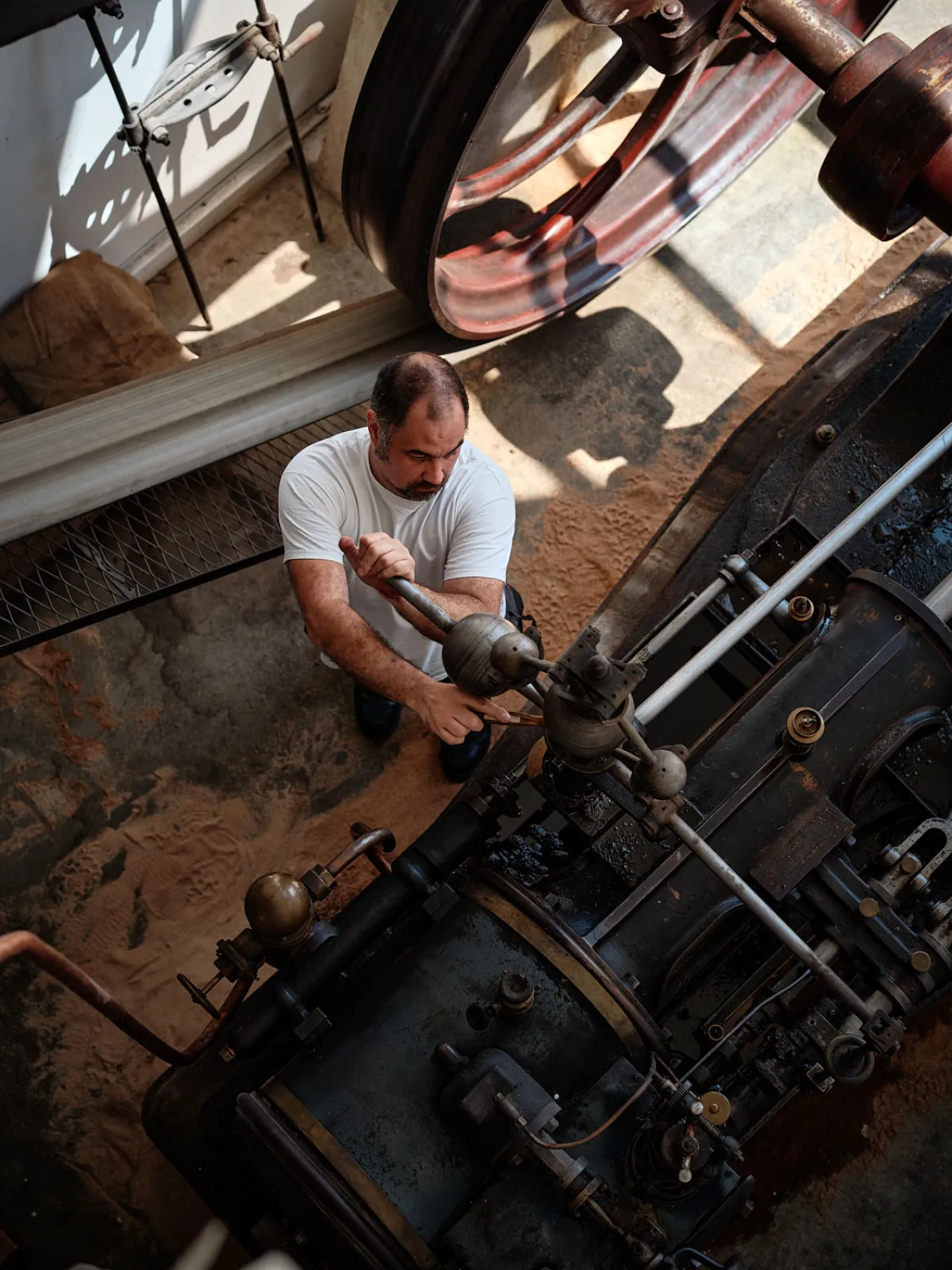The Musée de la Nacre et de la Tabletterie Bringing age-old craftsmanship back to life
Located in a former 19th-century factory in Méru (Oise), the Musée de la Nacre et de la Tabletterie conserves and displays once-thriving but now-vanishing local crafts.
- 2025 • Liliane Bettencourt Prize pour l'intelligence de la main® - Parcours
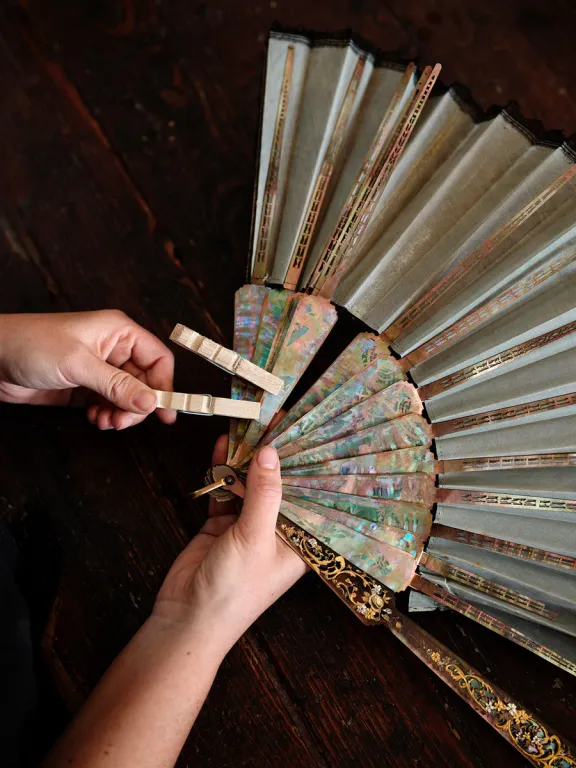
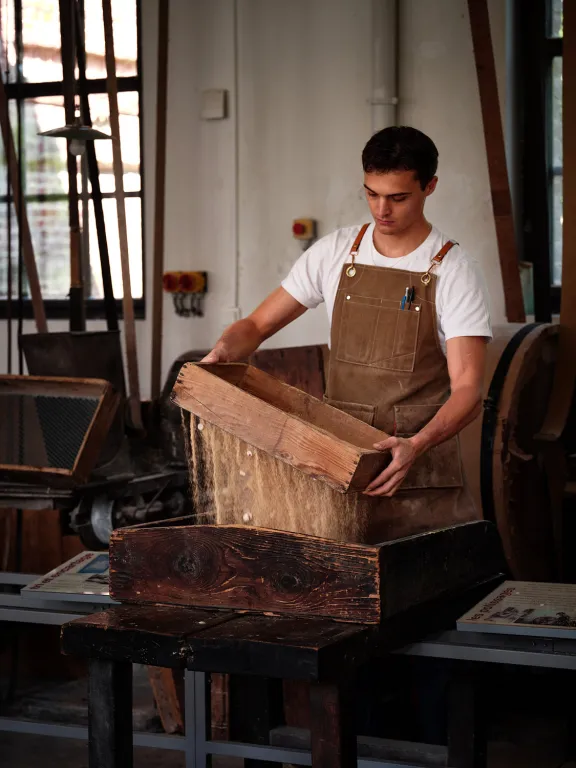

This craftmanship is fascinating yet barely known. The small town of Méru, 50 kilometres from Paris, is home to the Musée de la Nacre et de la Tabletterie, which preserves and passes on a unique craft and industrial heritage emblematic of this area in the southern part of the Oise department.
Created in 1999, the museum showcases the art of tabletiers, who for over 500 years have worked with hard materials of plant or animal origin such as bone and horn. Their intensely precise craft emerged in the Middle Ages with the creation of small writing tables (the French word tabletier comes from the Latin tabula, meaning “table”) and gradually expanded to include the making of everyday objects like combs, brushes, canes, buttons and knives as well as games such as dice and dominoes. The diversification of raw materials (mother-of-pearl, ebony, ivory, tortoiseshell) fuelled the trade’s expansion in the late 17th century, but the 19th is when it reached its peak with industrialisation.
This award will give our work, and our region, the visibility indispensable for its development.

Florentin GobierMuseum Director
The Méru region once boasted nearly 10,000 tabletiers, who produced flatware, buttons, other fashion accessories and fans, which were spectacularly successful. They made the structure of the fans (engraving and sculpture), which large Parisian workshops then adorned with lace, feathers, painted silk or Japanese paper. This golden age was inexorably followed by decline when plastic and cheap products from Asia arrived in the 1930s.
To showcase this rare craftsmanship, which is still emblematic of the region, the Musée de la Nacre et de la Tabletterie is committed to passing on this heritage by demonstrating the main techniques in a creation and restoration workshop; conserving collections and presenting techniques and pieces dating back to the 16th century; and achieving a cultural goal by purchasing the outstanding collection of fans from the Musée de l’Éventail in Paris in 2023. What better way to celebrate the 25th anniversary of the museum, which aims to reaffirm its purpose more than ever: bringing together tradition and innovation, local roots and international influence, the memory of past craftsmanship and the future of the collections.
We are campaigning for the elimination of plastic, which has overrun our daily lives. Our collection of objects shows that these items can still be made of natural materials and offer exceptional beauty and durability.
Florentin GobierMuseum Director
The musée de la Nacre et de la Tabletterie en quelques mots
Located in a former factory and designated historic landmark, the museum traces the history of tabletterie, a local craft. Méru, once the world’s mother-of-pearl capital, saw the trade become a thriving industry in the 19th century.
Awarded the Musée de France label in 2008 and headed by Florentin Gobier, the museum has a collection of decorative and functional objects (fans, buttons, dominoes, etc.) and a workshop to preserve and pass on this unique heritage.
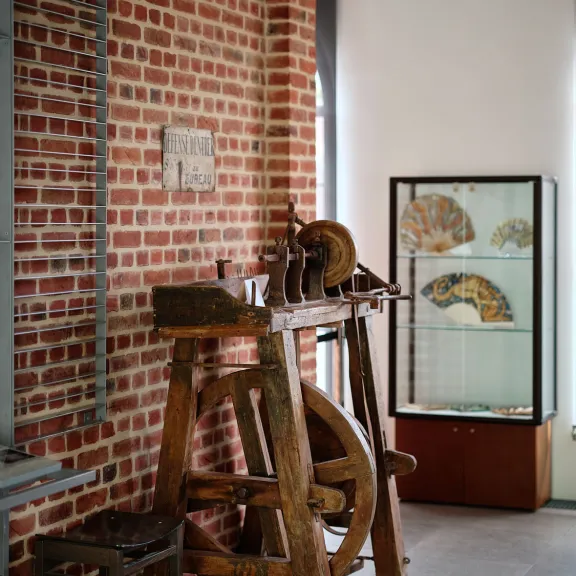
-
1999 Inauguration of the musée de la Nacre et de la Tabletterie.
-
2000 The first full year of operation is a success with 20,500 admissions, topping the original estimate of 15,000.
-
2006 Start of expansion work to add the workshop and classrooms.
-
2023 Purchase of the collection of the fan museum in Sablons (20,000 pieces).
-
2025 Laureate of the Liliane Bettencourt Price pour l'intelligence de la main - Parcours.
